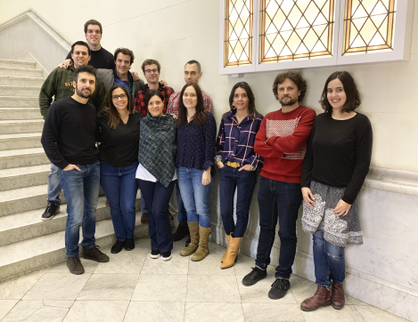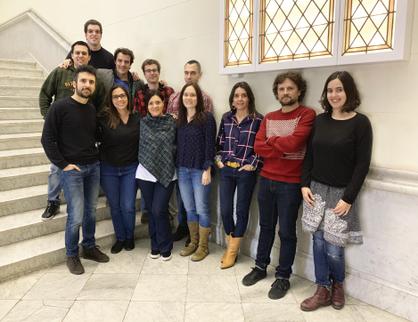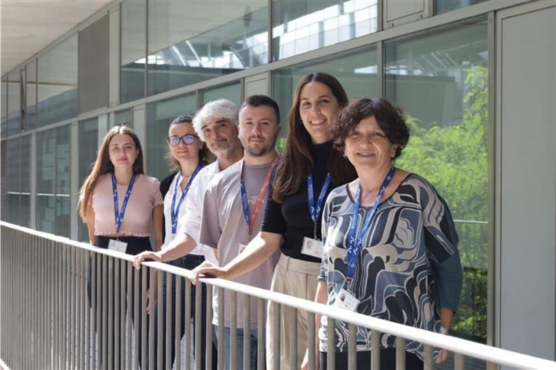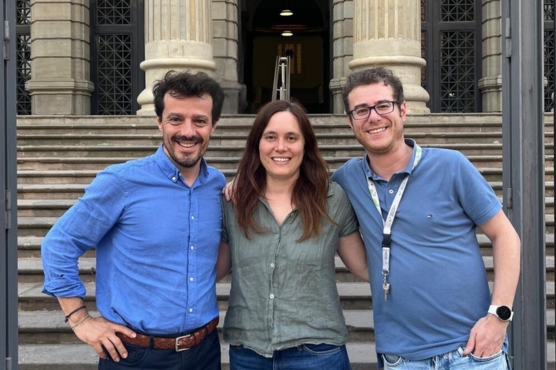►The study, the outcome of a multicenter collaboration, unravels molecular vulnerabilities of acute pediatric leukemias from multiple perspectives, for the first time.
►The results are based on genomic and epigenomic sequencing and whole transcriptome of 69 babies with a poor prognosis type of leukemia and their computational analysis.
►The research was led by researchers from the Josep Carreras Leukemia Research Institute, the CSIC and the Principado de Asturias Health Research Institute.

The Stem Cell Biology, Developmental Leukemia and Immunotherapy group of the Josep Carreras Leukemia Research Institute.
The prestigious Journal of Clinical Investigation (JCI) has just published an investigation focused on the identification of molecular alterations in acute pediatric leukemias that could act as essential pillars to support tumor proliferation.
This research, international by nature, was led by the Stem Cell Biology, Developmental Leukemia and Immunotherapy group of the Josep Carreras Leukemia Research Institute and the Epigenetics of Cancer and Nanomedicine group of the Principado de Asturias Health Research Institute (ISPA-CSIC). “The clinical importance of the work lies in the magnitude and multidisciplinary nature of the study, since all the children belong to the prestigious international treatment protocol for leukemia in babies, INTERFANT, which makes the clinical associations very reliable,” says Pablo Menéndez, head of the stem cell biology, developmental leukemia and immunotherapy group at the Josep Carreras Research Institute.
Thanks to a collaborative effort between different national and international institutions, researchers have been able to sequence the genome, epigenome and transcriptome of 69 babies with a poor prognosis type of leukemia. “Interestingly, these pediatric leukemias had a very small number of mutations, which led us to explore different approaches to identify possible therapeutic targets, or Achilles heels of the tumor,” continues Menéndez.
To do so, the Cancer Epigenetics and Nanomedicine laboratory has used a battery of computational analyses to delineate the map of molecular alterations existing in these pediatric leukemias. “Using state-of-the-art -omic technologies (genomics, transcriptomics and proteomics), we have been able to characterize the epigenome and transcriptome of certain types of acute pediatric leukemias in great detail. The novelty of this study lies in the integration of the data, which has allowed us to glimpse, much more precisely, the signaling routes on which this type of cancer is based ”, Juan Ramón Tejedor, first author of the article, comments.
On the other hand, Agustín Fernández, head scientist at the CSIC and also a member of the Epigenetics of Cancer and Nanomedicine laboratory, stresses that “there are numerous similarities between the different types of pediatric leukemias that we analyze. However, we were struck by the marked functional effect of the AP-1 transcriptional complex in those leukemias with the worst prognosis, which led us to delve into the possible role of these factors in tumor proliferation”.
These observations, obtained in silico, that is, by computational means, has been exhaustively double checked by researchers from the Josep Carreras Research Institute. Clara Bueno, co-lead author of the work, explains that “We have developed a series of sophisticated in vitro, ex-vivo and in-vivo tests to validate the effect of the AP-1 pathway in this type of pediatric leukemias”. On this regard, the researchers used a series of experimental techniques including gene editing models mediated by CRISPR technology, patient cells xenotransplanted in animal models, trials with pharmacological inhibitors and even an à la carte mouse chemotherapy model, which allowed them to demonstrate the potential therapeutic effect of this transcriptional complex in mouse models, a step prior to experimentation in human patients.
The results open the possibility to develop new clinical trials, capable of determining the effect of pharmacological inhibitors of certain signaling pathways in childhood cancer. As Mario Fernández Fraga, coordinator of the Cancer Epigenetics laboratory and last co-signer of the article, comments: “these results are very promising, but we must be cautious and remember that we are still in the preliminary stages of research on models animals”.
In addition to the aforementioned institutions, other Spanish entities such as the University of Oviedo, the University Institute of Oncology of the Principado de Asturias (IUOPA) and the Center for Research in Nanomaterials and Nanotechnology (CINN-CSIC) have also collaborated in this study. Also, the Centers for Biomedical Research in Network for Rare Diseases (CIBERER) and Cancer (CIBERONC), the Institute of Biomedicine and Biotechnology of Cantabria (IBBTEC), the National Center for Oncological Research (CNIO), the University of Barcelona and the Children’s University Children’s Hospital Jesus. At the international level, the Tettamanti Research Center (Italy), the Armand Trousseau Hospital (France) and the Princess Maxima Pediatric Oncology Center (Holland), participated.
This study has been possible thanks to the funding of various entities and foundations, among which are the European Research Council (ERC), the Ministry of Economy and Competitiveness (MINECO), the Carlos III Health Institute (ISCIII), the Plan of Science, Technology and Innovation of the Principality of Asturias (PCTI), the Spanish Association Against Cancer (AECC), the Uno Entre Cienmil Foundation, the General CSIC Foundation and the Leo Messi Foundation, among others.







